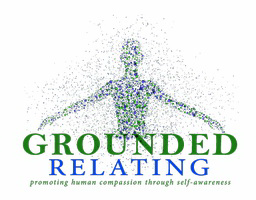Nine Enneatypes of the Enneagram
The many uses of the Enneagram include the unveiling of nine archetypes of humanity, also known as Enneatypes on the Enneagram of Personality. As discussed in previous articles, the three Centers of Intelligence on the Enneagram further subdivide into nine distinct archetypes. There are three Enneatypes in each of the Center of Intelligences, which makes a total of nine Enneatypes.
Although the three Enneatypes of each Center will share similarities of emotional avoidances and typical, predictable patterns of interfacing in the world, each of the three Enneatypes will also possess distinct, different, particular, and observable ways they like to process or experience data, emotions, situations, life, etcetera. Additionally, in each of the three Enneatypes of a Center, there can be much variation, due to what the Enneagram has called “wings” and subtypes. There is also variation within type according to an individual’s move to stress or security on a moment-to-moment basis.
The names for each Enneatype below are taken from the Narrative Tradition, and the brief snapshot statement of each Enneatype that follows, describes what people of that Enneagram Type have said about themselves and what is generally thought to be a close encapsulation of that Enneagram Type in action. Enneatype is usually easiest to detect before a person truly discovers themselves and while they are still acting out on automatic scripts.
Once awareness is applied to a type, the Enneatype itself will still be present, however, underground, motivating the individual to respond in this way or that way. Much like when you know a person as a child, and then you witness them years later as a teenager, and then if you see them decades later as a full-adult with more maturity, the person will be the same person you always knew. However, how they “appear,” both physically and maturity-wise will have morphed or shifted. It is similar with the Enneatype; there is a natural progressing of type, and there are shifts in type, but the baseline motivations of type remain the same, but may become nuanced or informed by the wisdom of other types, discovered, experienced and metabolized.
The nine Enneatypes include: 1-The Perfectionist, 2-The Giver, 3-The Performer, 4-The Tragic Romantic, 5-The Observer, 6-The Loyal Skeptic, 7-The Epicure, 8-The Boss, and 9-The Mediator.
So remember: in each Enneatype number, there could be individuated variances. All Givers do not look alike; neither do all Mediators. Please observe and choose your Enneatype for yourself, and allow others the same privilege and respect. Please, please, please, do not tell another person what their type is, according to this list or any other. Curiosity around Enneagram types, or better still an individual’s current understanding of what their type might be, is much more compassionate than flat-out labeling. The following discussion and table of data is offered in that spirit of curiosity rather than one of flat-out labeling.
Enneatypes of the Head Center of Intelligence
Head Types very generically process data, experiences, and sometimes even emotions, as an intellectual concern and are looking to control through the mind. A considerable amount of energy is put into “thinking,” options, potential pitfalls and strategies. They keep mentally active and alert to stay ahead of the game of Fear.
Enneatype 5 The Observer tends to be more in and quiet, than out; they tend to disappear to observe, and then control themselves with visibility, motivated a little from a sense of keeping safe, or preventing fear. What the Enneatype 5 may not want you, or themselves, to know: “I need help because I am not as self-sufficient as I always believed. I have emotions, I get angry and sometimes I might actually feel and it is lonely.”
Enneatype 6 The Loyal Skeptic can be out in the world or inside themselves or both, and is likely perpetually oscillating between the two. But the Loyal Skeptic is always scanning to prepare for what they may need to control next, also in an effort to manage fear. There are two Enneatype Sixes: a Counterphobic who runs into their fear to manage it and the Phobic who runs away from their fear, a classic dichotomy of Fight or Flight. What the Enneatype 6 may not want you, or themselves, to know: “I am fearful and worried all the time on the inside, but I project that fear onto the outside world so I don’t feel it on the inside. And then you know what? My projections keep coming true! I really just want to relax and chill out.”
Enneatype 7 The Epicure tends to be more often out than in, and may keep a happy face or happy outlook of endless possibilities on everything in an effort to control life and situations with their happy, positive or upbeat outlook, which may be hard to associate with the fear of limitation. What the Enneatype 7 may not want you, or themselves, to know: “What’s fear? My life is good; I’m happy; I’m OK!…what pain? There’s no pain. Just a little more lemonade out of lemons. No problem! What else can we get into?”
Enneatypes of the Heart Center of Intelligence
Heart Types very generically process through relationship and understand themselves through connection and their image of self in the world, an image this type works hard and frequently non-stop to maintain. As a result the Heart Types’ focus out there, takes their focus away from their internal self, and there is Loss, Grief or Shame about this lack of connection to Self.
Enneatype 2 The Giver-tends to be more out in the world, looking for ways to be of service, in an effort to guarantee that they will also be loved. The Giver can have a big energy of warmth and caring that is in service of others or an equally big energy of upset at not having approval and recognition from the others they just helped. What the Enneatype Two may not want you, or themselves, to know: “I need your approval and affirmation in order to feel good about myself. I have trouble sourcing that internally. I may not know I have needs. ”
Enneatype 3 The Performer tends to be very out and successful, in the world or in their family. Theirs is a task-focus orientation that will push emotion and occasionally “rightness” aside“ in order to win or get the job down. Threes tend to be competitive, in the know, and very capable. What the Enneatype 3 might tell you: “I have value; I am important; See how productive/wealthy/important I am? I know all the right people, have all the right homes, cars jobs, etc.; I am connected because of what I do, not who I am. I may never tell you I could sleep for a month, and that I’d love to just sit and do nothing. I believe I have to perform in order to be loved or have value. “
Enneatype 4 The Tragic Romantic tends to be a mix of anything that is not mainstream. There seems to be a push-pull orientation to everything, with the “grass always greener” wherever the Enneatype 4 is not. They are special in order to avoid that they are not good enough to belong. What the Enneatype 4 might tell you: “I don’t belong; something is missing. Well, if I can’t have belonging, I will just be ‘anti-belonging’ and exist off the grid, in my own unique and special way, and I’ll stay connected to my uniqueness. I won’t reveal to you, or myself, that sometimes I wonder if being ’special’ keeps me isolated.”
Enneatypes of the Body Center of Intelligence
Body Types very generically lead, learn and experience in a very body-based fashion. This could include an over-emphasis on bodily comforts and indulgences, as well as a forgetfulness of bodily needs and concerns. Additionally, there is a certain gut or sudden springing into action associated with this type.
Enneatype 8 The Boss tends to get noticed wherever they go however they are. Possessing a big energy The Boss can be combative, protecting and challenging. Lust and excessiveness are words often associated with 8s. What the Enneatype 8 might tell you: “I am powerful and always have been. Brute force will carry the day. I can take them because I’m strong. Get out of my way or else. I don’t suffer fools…This doesn’t mean I don’t have a tender side. You may not know I have a soft underbelly, possibly because I won’t show you. But really, on the inside I’m just a soft, cuddly Teddy Bear.”
Enneatype 9 the Mediator tends to blend in, doesn’t really rock the boat or stand out, and usually will not get much notice. They are agreeable and harmony seeking and harmony creating to the point that it may look like they don’t have an opinion nor do they do very much. They don’t really know they get angry; more they might just dig their heels in a little bit, or a lot. Because the 9 can so clearly see the value of all the other 8 types’ positions, it can sometimes be hard for the 9 to find, and voice, their own agenda. So sometimes they take their agenda underground, get it set, and then announce it, so that there can be no conflict or argument about their agenda which is already set. What the Enneatype 9 might not tell you: “I don’t want to cause a fuss, but could I be the shining bright star this time? I was thinking totally in a different direction, but now, I can see your point of view. It is so interesting. But really I just want everything and everyone to be peaceful, and what you say makes sense…so, yeah. Let’s do it your way, or her way, or even his way. I don’t have a particular agenda.”
Enneatype 1 the Perfectionist-tend to be out and about changing the world or their small piece of it. They have a guiding sense of what is right and what is not right, and they have constant self-talk telling them the difference. They don’t get angry exactly, but they might harbor some resentment. Although emotions are unnecessary generally, the 1 has ready access if something is wrong. What the Enneatype 1 might tell you: “That is JUST SO WRONG! I am mounting a campaign to change the world, or just my piece of it….What? Am I angry? You say I look angry, but I’m not really. Once I fix that wrong, things will be perfectly serene again.”
The big picture of the nine Enneatypes
Obviously, the chart of data above is a very black and white, short, synopsis of only one angle of the Enneatype, viewed from the lens of the Three Centers of Intelligence. There are other lenses, like Subtypes, the move to stress, the move to security, and wings. When this data is taught in the Narrative Tradition, panels of multiple people of a certain Enneatype speak their experience of themselves as that Enneatype, and the audience is informed in the template of the Enneagram, one incarnated human at a time. Reading the above paragraph of text does not really do justice to the Enneagram’s sophisticated system. But it is a start.
There are many online resources as well as books with which to further your understanding of the Enneagram. The following series of articles will give you a broad base understanding about the Enneagram, its history, the nine basic Enneatypes and the three Centers of Intelligence. If you are interest in more information, contact us directly using our Grounded Relating contact form. Otherwise, please enjoy the following articles:
- Enneagram historical origins remain cloaked
- Universal Enneagram symbol explains life
- What is an Enneagram of Personality symbol?
- Three Centers of Intelligence mapped by Enneagram
- Core Enneatypes and Enneagram variations
- Enneatypes: nine archetypes of the Enneagram (this article)
- Suggested books,websites and other Enneagram resources
Below is The Nine Enneatypes According to Defense Pattern, Avoidances and Fixations chart, a long, scrolling table which highlights the nine Enneagram archetypes, and what those fixations in action might look like.






